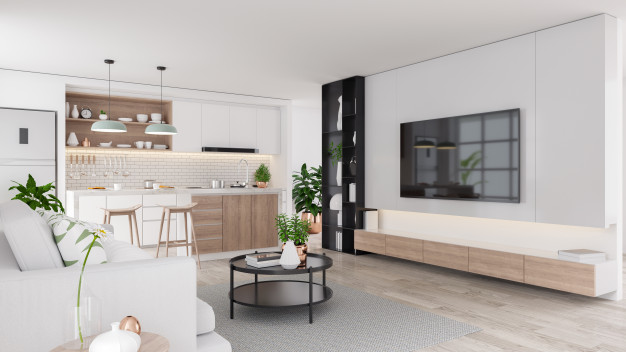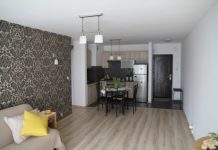Built-Ins or Furniture…that is the question.
When it comes to picking furniture for your home vs going the built-ins route – there are a number of factors to consider. For instance, how expensive it’s going to be, if it will last, and if it will be right for your needs!
While the answers to these questions often depend on your preferences and budget, etc., there are certain scenarios where one option would be better than the other.
To help you figure it all out, here’s our verdict for built-ins vs furniture, in terms of cost, quality, functionality, and personal design penchants:
1. Cost
Often, the first and most important thing to consider for the carpentry vs standalone debate – is the costing aspect.
So which will hurt your pocket less?
In general, customised built-ins tend to cost more when compared to purchasing retail furniture pieces.
This makes sense when you think of the design, workmanship, and quality materials that go into personalised built-ins.
However, this is not always the case; consider that standalone antique furniture pieces are supremely expensive.
Furthermore, you can get carpentered works done within a specified budget.
Also, if you aren’t dealing with odd angles or require very little customisation, then pre-fab built-ins can further trim costs.
Thus, the cost of either ‘loose’ furniture or carpentry can be as expensive or cost-friendly as you want it to be.
The true cost would depend on quality, the level of customisation needed, etc.
Verdict: On average, loose furniture is cheaper but built-ins can be tailored for various budgets.
2. Quality and Durability
Much like the cost factor, the quality and sturdiness of either built-ins or standalone furnishing can be adapted to one’s budget.
With that said, carpentered pieces, since handmade, is likely to be of higher resilience.
Carpentry works also often come with warranties and some of the time, maintenance and upkeep services too.
The quality of standalone furniture pieces can vary according to your needs and budget. It can be of extremely high quality when constructed with hardy materials.
For instance, cabinets made with hardwoods like maple and oak and by a furniture specialist, are very likely to be both of high quality and durability.
Verdict: Built-ins.
3. Design and Functionality
More often than not, built-ins are more functional because they can be designed and tailored to your specific needs.
If you need extra concealed storage, want to put in custom cabinetry in kitchens with odd angles or are interested in taking advantage of dead spaces in the home; carpentered pieces, made-to-fit are your best bet.
Also, carpentry would be the right option if you have a specific aesthetic or design in mind.
Still, that’s not saying that moveable furnishings won’t serve its purpose well.
You can certainly find high-quality, multifunctional pieces, often of the innovative Scandinavian or Japanese design persuasion.
Verdict: Built-ins.
4. Homeowner’s Lifestyle
Built-ins are not for those who enjoy frequent revamps. Thus, if you plan to redecorate every five years, then it’s best to opt for loose furnishings.
This way, you won’t have to deal with the added costs of hacking and other works to remove your built-ins, in addition to the initial heavier carpentry costs.
On the other hand, if you plan to use your built-ins for 10 years or more and are willing to maintain them as needed over the years; then go for carpentered pieces instead.
Verdict: Built-ins for long-term use and standalone furniture for those who constantly change up their home décor.














